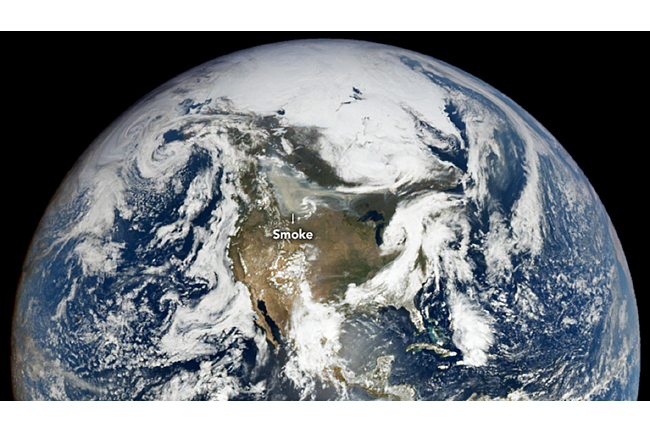Canadian Wildfire Smoke Was So Widespread it Was Visible From Nearly a Million Miles Away
Posted on Categories Discover Magazine

A huge “smokestorm” from blazing Canadian wildfires made headlines around the world recently. Now, NASA imagery shows the smoke was so thick and widespread it was visible to a spacecraft nearly a million miles from Earth.
The image was acquired by NASA’s Earth Polychromatic Imaging Camera (EPIC) on NOAA’s DSCOVR satellite on May 20, 2023. A gigantic swirl of smoke, described as a “smoke cyclone/smokestorm” by climate scientist Daniel Swain, is clearly visible.
Not quite as visible is the full, sprawling extent of the smoke.
A view of North America showing smoke from Canadian wildfires acquired by NASA’s Terra satellite on May 20, 2023. (Credit: NASA Worldview)
That full extent is more easily discerned in this image from the Terra satellite orbiting at just 438 miles above Earth’s surface.
On May 20, the smoke, arising from wildfires in Alberta, was entrained by a large low-pressure system swirling counterclockwise over Canada and the United States. The pattern of that circulation, as well as a long tail of smoke stretching more than 1,500 miles across North America, is clearly visible.
From more than 2,000 times further away from us than Terra, DSCOVR’s EPIC camera still managed to see that tail of smoke. It’s faint in the image at the top of this post, but if you look very carefully, you can see it there too.
DSCOVR is the acronym for the Deep Space Climate Observatory spacecraft. It keeps a constant eye on on both the Sun and our planet’s sunlit side from the extremely distant vantage called Lagrange Point 1.
The spacecraft’s main role is to monitor the Sun for massive eruptions of particles and magnetic field toward Earth. From its position, DSCOVR can provide 15- to 60-minute advanced warning before these coronal mass ejections, or CMEs, reach us and potentially disrupt satellites, communications, and electrical grids.
Meanwhile, the spacecraft’s EPIC instrument measures ozone, aerosols, the reflectivity and heights of clouds, and other scientific variables — while also providing a unique, distant photographic perspective on the home planet.